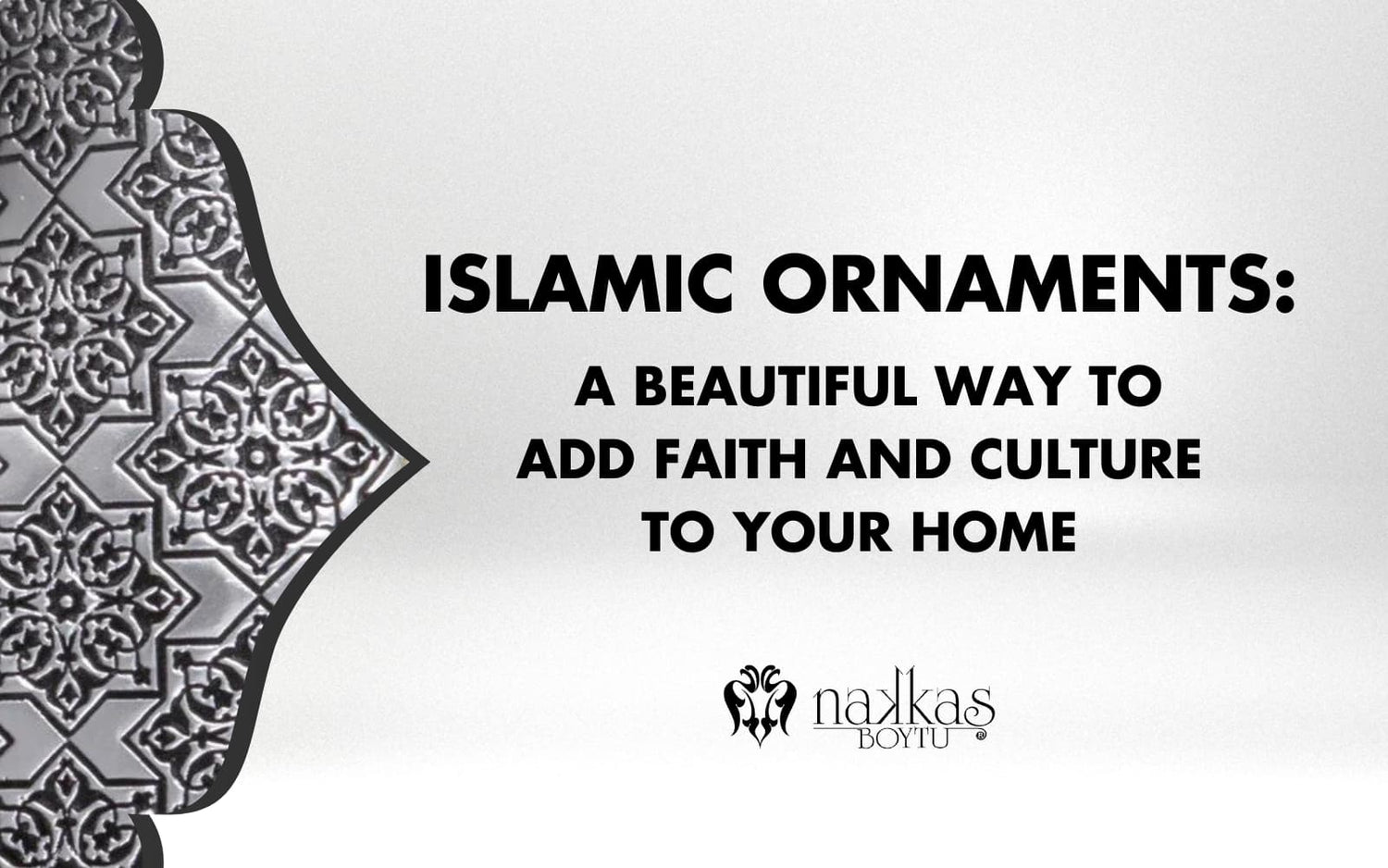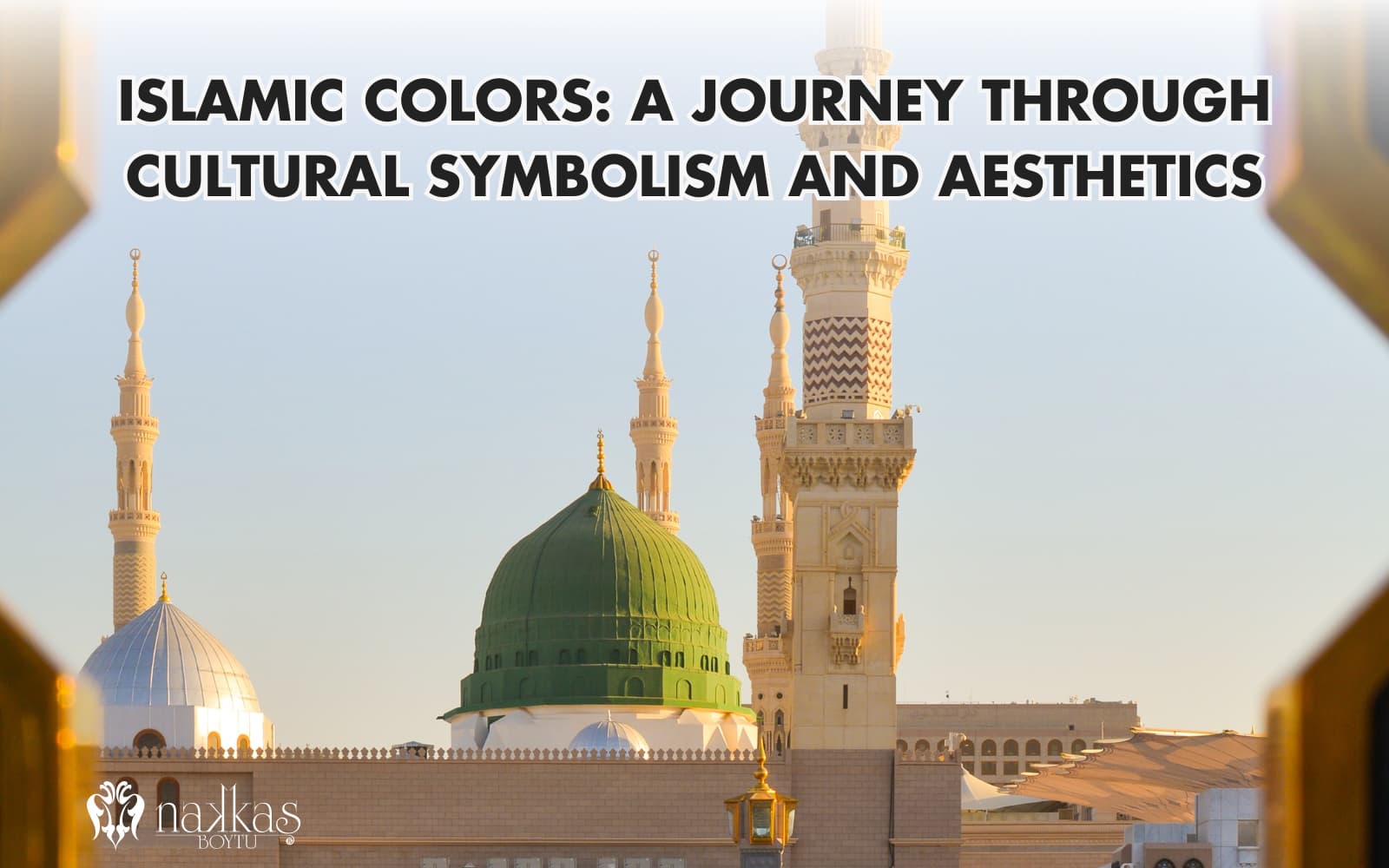Embark on a transformative journey into the heart of cultural elegance with Islamic ornamentation. Each piece, a symphony of intricate designs and profound symbolism, invites you to decorate your home in a way that enriches both space and soul. Through the artful integration of Islamic ornaments, your living environment becomes a canvas, reflecting a heritage rich in artistic mastery and depth of meaning.
In this blog, we will explore various types of Islamic ornamentation, including geometric patterns, calligraphy, floral and animal motifs, and architectural designs, and how they can enrich and transform your home decor. This journey into Islamic art is not just about decoration but will bring a bit of history, culture, and a sense of the transcendent into your living space..
What are Islamic Ornaments?
Islamic ornament design refers to the use of decorative patterns and motifs in Islamic art, characterized by their intricate and symbolic nature. This form of design is a key aspect of Islamic cultural expression, blending aesthetics with deeper meaning and significance.
The primary elements of ornament in Islamic art include geometric patterns, arabesques, and calligraphic inscriptions, each contributing to the rich visual tapestry of Islamic artistic tradition. The study "Architectural Elements in Islamic Ornamentation: New Vision in Contemporary Islamic Art" highlights the evolving nature of these designs, showing how contemporary artists and designers are reinterpreting traditional motifs for modern contexts. This evolution ensures that Islamic ornament design remains a vibrant and relevant part of Islamic culture, bridging the past with the present and future.
What are the Different Types of Islamic Ornaments?
Islamic ornamental patterns are an integral part of art and architecture's aesthetic and meaningful fabric. These patterns are not merely decorative elements; they are imbued with deep cultural and religious symbolism, reflecting the rich heritage of the Islamic world. The 5 main types of Islamic ornaments are as follows:
- Geometric patterns
- Calligraphy
- Floral patterns
- Animal motifs
- Architectural motifs

Geometric Patterns
Islamic art is renowned for its intricate geometric patterns, which are a testament to Muslim cultures' artistic and mathematical ingenuity. These patterns, often comprising repeated squares and circles, are interlaced and overlapped to create complex designs. Beginning in the 9th century, these patterns developed from simple stars and lozenges into 6- to 13-point patterns by the 13th century, eventually becoming 14- and 16-point stars in the 16th century.
Islamic geometric forms are not just decorative elements; they are deeply symbolic, representing the universe's infinite nature and reflecting the Islamic emphasis on unity and order. Used in various mediums like ceramics, metalwork, and architecture, these patterns are a blend of art, science, and spirituality, offering a glimpse into the rich cultural heritage of the Islamic world.
Calligraphy
Calligraphy, a central element of Islamic art, masterfully combines aesthetic appeal with religious significance. This art form, often the dominant ornament in Islamic decor, seamlessly integrates with arabesque and geometric patterns, enriching the visual landscape of mosques, madrasas, and homes. In calligraphy, the flowing elegance of Kufic, Naskh, and Sulus is a profound expression where each script tells a story of faith and heritage.
Floral Patterns
Floral patterns are a testament to Muslim heritage's artistry and cultural richness. In Islamic art, floral patterns are typically intertwined with geometric shapes and calligraphy, creating a harmonious blend that reflects the unity and complexity of the universe. This artistic expression is rooted in the Islamic principle of reflecting beauty and profound depth without depicting living forms. By incorporating these designs, Muslims create aesthetically pleasing and uplifting spaces, embodying a unique blend of faith and artistry.
Animal Motifs
Animal motifs occupy an understated position in Islamic home decoration. While Islamic art is famous for its avoidance of figurative imagery to avoid idolatry, this does not completely exclude the use of animal motifs. When used, these motifs are highly stylized and abstracted, in keeping with the Islamic aesthetic preference for geometric and floral patterns.
The inclusion of animals in Islamic art carries symbolic meanings. For example, animals depicted in a hunting scene can symbolize power and nobility. However, it is worth noting that animal motifs are relatively rare and always done carefully to adhere to Islamic art and iconography principles. This approach emphasizes that decorative elements in a Muslim home should be visually appealing and harmonious with deeper cultural values.
Architectural Motifs
Architectural motifs distinguish themselves through intricate geometric patterns, arabesque designs, and calligraphic elements, all interwoven to reflect aesthetic beauty and profound symbolism. These motifs go beyond mere decoration, rooted in mathematical precision and deep significance, embodying the Islamic values of unity and order.
The harmonious integration of shapes like circles, squares, and stars, often combined with arabesques and calligraphy, creates a visual symphony that encourages contemplation and reflection. This unique approach to ornamentation in Islamic architecture showcases artistic creativity and conveys profound philosophical concepts, establishing it as a significant and influential art form in the global architectural scene.
How to Use Islamic Ornaments in Home Decor?
Integrating modern Islamic ornaments and home decor offers a unique blend of transcendent quality and style. These ornaments, characterized by intricate geometric patterns, arabesque designs, and elegant calligraphy, can transform any living space. Geometric patterns, especially, lend a sophisticated and complex touch to modern interiors, symbolizing infinity and inviting contemplation.
Arabesque motifs, with their flowing lines and organic forms, are perfect for adding a dynamic element to modern decor. Whether through metalwork, ceramics, or textiles, these patterns bring a sense of rhythm and life to a room. Incorporating Islamic calligraphy, which combines artistic beauty with meaningful messages, adds a deeply personal touch. A framed calligraphic piece or smaller decorative items with inscriptions can serve as both a focal point and a reminder of one's heritage and faith.
How Do Islamic Ornaments Differ from Islamic Symbols in Home Decor?
Islamic ornaments differ from Islamic symbols in home decor by focusing more on aesthetic and cultural representation rather than explicit religious meanings. While Islamic symbols often carry specific religious connotations, Islamic ornaments emphasize artistic beauty and cultural heritage. These ornaments enhance a space's visual appeal, reflecting the Islamic world's rich artistic traditions without necessarily conveying direct religious messages. This distinction allows Islamic ornaments to be versatile in various decor settings, appealing to a wide audience while maintaining respect for cultural and religious nuances.
What Is the Significance of Islamic Colors When Using Islamic Ornaments in Home Decor?
Islamic colors are significant in home decor and convey deep meanings and cultural heritage. Green, symbolizing paradise and life, is a prominent choice, reflecting its association with the 🌹Prophet Muhammad (S.A.S). Blue, indicative of the heavens and serenity, is frequently seen in textiles and tiles. Red, representing courage and strength, is common in carpets and wall hangings. Gold and yellow, denoting wisdom and illumination, often accentuate calligraphy and architectural elements. These colors, when incorporated into Islamic ornaments, enhance a home's aesthetic appeal and create a space that resonates with faith and beauty, making the use of Islamic colors a transformative aspect in home decor.
How to Incorporate Islamic Calligraphy with Islamic Ornaments in Your Home Decor?
Incorporating Islamic calligraphy with Islamic ornaments in home decor involves blending meaningful and artistic elements. This approach features calligraphic art, showcasing verses from the Quran or poetic writings alongside geometric patterns and arabesques, key elements of Islamic ornamentation. By integrating these designs, typically found in mosques and Islamic architecture, into items like wall art, textiles, or ceramics, one can create a home environment that resonates with cultural heritage and is aesthetically pleasing, making Islamic calligraphy a vital component in creating a harmonious and culturally rich living space.
Enhance your home with the timeless elegance of Islamic art by exploring Nakkas Boytu's exclusive collection. Our carefully curated selection of modern Islamic ornaments and table decor captures the essence of Islamic tradition and seamlessly blends it with contemporary style. Whether you are looking to add a touch of elegant sophistication to your living space or seeking meaningful decor, Nakkas Boytu offers a range of options that embody the beauty and depth of Islamic art. Visit us to discover how you can transform your home into a reflection of your heritage and faith.





